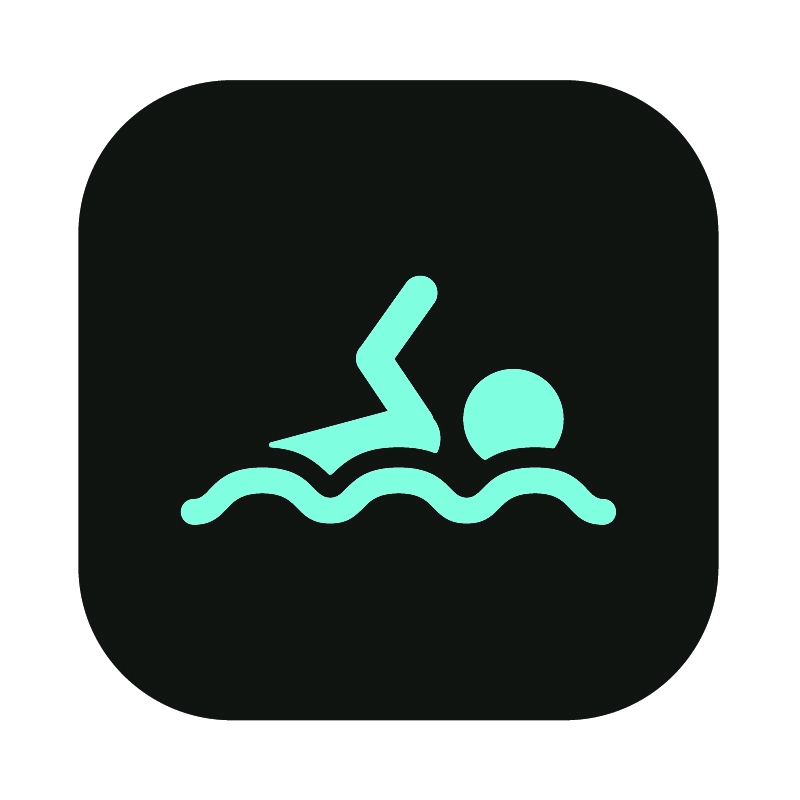Swim Technique Q&A.
 This Q&A piece on Swim Technique between Margaret Mielczarek and I was in Australian Triathlete Magazine…
This Q&A piece on Swim Technique between Margaret Mielczarek and I was in Australian Triathlete Magazine…
MM: Talk us through the fundamentals of freestyle. How do we get better at this stroke?
DW: Like all four of the traditional swim strokes, freestyle [specifically endurance or long distance freestyle] should have a ‘whole body’ approach. Splitting the body at the waist between limbs that kick and limbs that pull, will not yield the best results. Elite sprint swimmers in pool events up to around a minute can gain 15% more speed from a powerful kick whereas endurance freestyle within triathlon and open water should be saving the legs while they draft behind the body. To aid this skill, the arms and the legs should be synchronised while keeping the body as streamlined as possible.
Why is technique SO important in swimming?
Simple. Technique provides efficiency. Swimming is the most technique heavy part of triathlon, and learning new skills as an adult takes time and application. Dragging your butt through an hour of swimming just to tick a box is not a good idea if 50 of those minutes are spent programming poor technique. I compare it to learning the piano as an adult: first we must master our scales… lots of time spent programming a new skill doing seemingly mundane exercises. There’s no point spending an hour hitting bum notes. Gasping and uncomfortable 100m intervals struggling to keep up with the guys at the front of the lane will also yield limited improvement. Practising with the best technique will mean racing with the best technique and that means efficiency. In simple terms, that’s fewer calories spent, less heart beats used and leaving the water more comfortable before getting on the bike.
Can you share with us some good drills to learn/practice good technique?
The two biggest issues I find with those struggling to improve in the water are poor rotation and fighting the water. Any drills which encourage solving these issues will help. As a simple starting point to any drill progression, lying face down in the water and relaxing the head and neck will immediately teach the athlete that the water will always be dense enough to do the hard part – keeping you afloat. From this, we can flutter along with a light kick and rotate from the hips to breathe before returning to a ‘torpedo’ shaped flutter kick. From here, all drill progressions are begun.
Dry land activation – why is this important to do before starting a swim session? Should all athletes be doing this?
There’s still a fair bit of debate centred on stretching in riding and running, which I won’t continue here but I do advocate stretching and activation before swim practise. The stretching part is not to avoid injury or specifically to warm up muscle groups, but more so to prepare the limbs [namely the arms and shoulders] for achieving the most useful positions while in the water. Most age groupers are not ultra-flexible like elite swimmers, so getting our elbows and forearms into the most useful positions is difficult without a little preparation. If we accept that freestyle should be a whole-body approach, then most of the power comes from the hips and core – where rotation is controlled. By doing some pilates-style activation on the poolside before practise will warm up the core and back muscles while kick-starting the brain to hold you flat in the water.
At what point would an athlete join in with a swim squad? What (if any) level should an athlete be at before considering going to a swim squad? For example, should you be able to swim 25m/50m/100m continuously before coming to squad?
If an athlete is new to squad swimming, confidence needs to come first. Finding – and choosing – the right triathlon or swim squad will come down to numerous factors such as social aspects, timing of sessions and how damn fast the coach is expecting you to go! Whether it’s for fitness or racing, I would suggest being able to swim non-stop for 200m before joining up. If this isn’t possible, either book some one-to-one time with a swim coach or just do some laps in the public lanes each week until you’re ready to talk to a squad coach. Every squad will have different paced lanes for different goals – there will always be a slower and a faster swimmer! Obviously, if the athlete is aiming at a sprint distance triathlon, swimming non-stop for 750m should be the primary goal.
How many times a week should athletes swim with the squad?
This is a tricky one and down to the individual athlete, how much time they have and what their goals are. If they are strong runners and riders, but weak swimmers I would actually advocate swimming shorter sessions more often during the week. For example, forget the gym or even a shorter run session and aim for four or five 40-minute sessions in the water spending most time on drills i.e. doing our scales on the piano. This will yield the most improvement as it limits the time spent enforcing bad habits. Typically though, a full week of triathlon training would see an athlete in the pool three times. If you can only swim with the squad once or twice, try and make up the remainder of the three alone. Humans aren’t born to swim so the more spent time in the wet stuff the better.
What are the benefits of attending squad over solo swimming? Is it OK to do a mixture of both or is it better to swim with a squad?
As above, mixing time spent with a swim squad with some swimming alone is fine as long as the athlete is getting some coaching advice and pointers on technique. Most people prefer the squad sessions because it means some social interaction in a lane that’s reserved rather than having to negotiate other swimmers in public lanes. If the athlete can hit the pool at quiet times, members of the public won’t be an issue but again make sure some coaching advice is being sought.
What sort of things can athletes expect to get out of swimming with a squad? What does a swimming session look like?
Swimming with a squad provides the two most important aspects of preparing for a race or getting fit: an organised structure to training, and feedback on technique. A quality swim or triathlon coach will be able to structure different sessions over a matter of months to ensure the correct progression of fitness – we call this ‘Periodization’. On top of that, to ensure development is holistic, the coach will be able to pinpoint areas of a swim stroke that need attention to enable improvement. A swim programme for fitness or a specific race goal could last anything from 12 weeks to 6 months. Depending on the periodization, a single session could aim at developing any of the four key attributes: drills for technique, endurance, speed or recovery. Each session would typically contain a warm-up of easy swimming and drills, followed by the key or ‘main set’ which would focus on one of the four key energy systems. For the final 10 minutes or so, swimmers are encouraged to cool down with some easy swimming, usually focussing on an individual weakness or ‘limiter’.
What are some of the biggest mistake triathletes make with swimming?
It is very common for athletes to treat swim practise like run or bike training by convincing themselves that harder and faster intervals will make them a more efficient and therefore faster swimmer – this is a big mistake. This is searching for speed as opposed to searching for efficiency. Once the athlete accepts that efficiency should come first, speed will come to them… not the other way around. Another big mistake is that swimmers become reliant on tools such as fins and pull buoys because they suddenly feel like relaxed and super-streamlined swimmers. These tools become a crutch that simply takes time away from learning to swim efficiently without them; on top of that, these tools enforce the thinking that swimming is legs that kick and arms that pull = mistake.
Why is swimming such a point of contention among some triathletes (especially newbies) and how can athletes gain speed/strength/confidence in the water?
I think the point of contention among newbie triathletes – especially those that are new to swimming – is that they convince themselves that the swim portion of a triathlon is not significant in time so therefore neither should their training be! This is the easiest to answer though… speed, strength and confidence all come down to one thing: spending time in the water. Not the gym, not the library… in the water.
What is your biggest tip for athletes wanting to improve their swim?
Just one tip… the athlete should have some stroke analysis carried out. Some coaches will record some video to talk back over what is going right and wrong within the water (what happens out of the water doesn’t matter nearly as much but that’s another discussion). Once the athlete knows the issues to work on… drills, drills and more drills. Aerobic fitness can be developed while running and riding – don’t worry it won’t disappear.
How do you athletes transition from pool swimming to open water swimming, as the triathlon season gets closer? How often should athletes do open water swimming and would these sessions take the place of swim squad sessions in the pool?
Once an athlete is confident in the pool, the same progression should follow for open water swimming: go with a group of the same performance level together with a coach who can guide you. Again, the more time spent in the water the better but once per week in the lead up to the race season is fine. Ideally, this is in ADDITION to the normal pool sessions, as the open water session is more about sensory awareness than fitness or technique. Diving deeper (sorry!) – if an athlete is travelling to a new race venue and swim course that is unfamiliar, arriving a couple of days early to get used to the water and surroundings is very valuable. If an athlete is self-admittedly terrified of the open water (not surprising in Australia, let’s be frank) the best option is to take as much time with a patient buddy or coach to traverse from simply being near the shoreline to standing, sitting then moving through the water. A lot of swimming development comes from training the mind – rather than body – through repetition of movement. This applies just as much for phobia of the open water too: train the mind in the best way possible.
Read the entire ‘Swim Special’ edition of Australian Triathlete here:
https://issuu.com/publicitypress/docs/australian_triathlete_25.2
If you’d like to book a sessino for Dan to analyse your technique drop him a line here.
